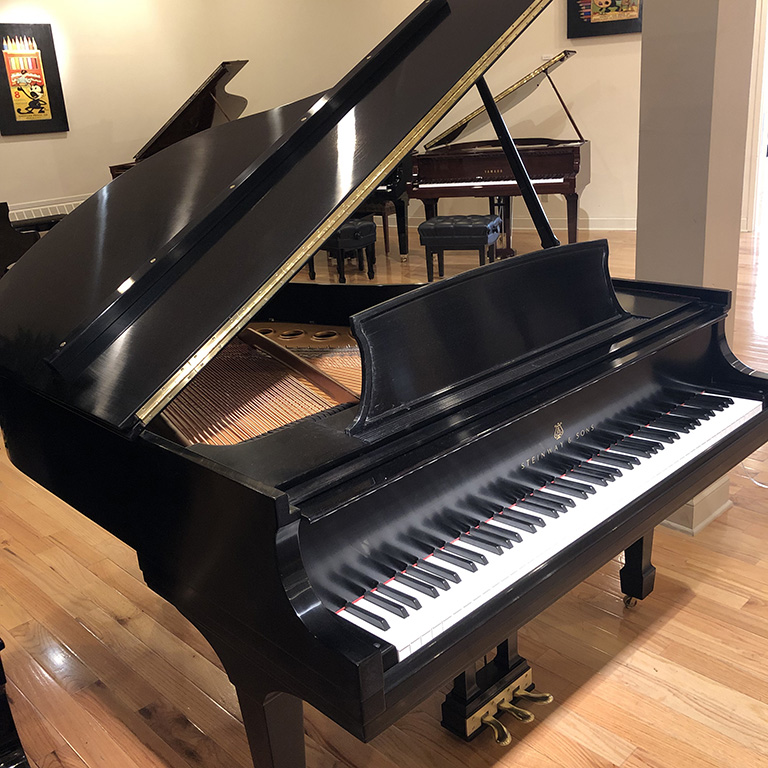

Our hammers are hung according to the best possible sound produced, in relation to the optimal placement of the action fore and aft.

Here, a 1/8" difference would be drastic if not corrected properly! In fact, the last few upper octaves of the piano are the most crucial for hammer placement. Vintage Steinway actions have hammers that are hung anywhere from 5" to 5 1/ 16" on the shank. This is futile exercise that only makes the situation worse.Ĭurrent Steinway and Sons piano specifications call for the hammers to be hung on the shank at 5 1/ 8". In addition to that, many technicians will try to compensate for these poor performance numbers by inserting 6, 7, or sometimes even 8 leads in a desperate attempt to improve the touch of the piano. It is not uncommon for us to see poorly restored Steinway piano actions with down-weight measurements of 90 grams, and up-weight measurements of as low as 10 grams. Understanding that each gram at the hammer end of the shank increases touch-weight by 5 grams at the key, the Japanese hammer would make note #26 about 12 grams heavier to the touch! Amplify this with incorrect parts selection that have geometry problems, and it is easy to see how an inexperienced technician can ruin the performance of a Steinway piano action. The most significant problem visible in this example is at note #26 (center photo), where we see the Japanese hammer is 2.3 grams heavier than the Renner replacement. The Japanese hammers that were used predominantly in the 1980's, are substantially heavier than the current special order Premium Renner Blue Hammers that we use on most vintage Steinway and Sons pianos. One of the most common and major problems in piano action rebuilding today is the incorrect use of heavy hammers in vintage Steinway pianos. This piano's soundboard was beyond any reasonable repair in this condition, and was replaced with a dimensionally duplicated new soundboard and bridge tops. This is a prime example that shows why old soundboards do not stand the test of time, and eventually need to be replaced. As you can well imagine, there was no such thing as “Crown” on this board. Without the ribs firmly attached to the panel, any cracks present will easily separate and cause horrible buzzing and vibration, and only proper repairs can cure this situation. This sometimes will cure a buzzing situation, but at the expense of completely destroying any tone and sustain that the board is designed to provide. Immediately noticeable in the second picture is an attempted fix where a “piano technician” in the distant past wedged a large angled shim underneath the #11 uppermost treble rib in an obvious attempt to stop an annoying buzz. Notice how every one of the ribs have detached from the piano and remained on the rim when we removed the board. This original soundboard on an 1883 Steinway and Sons Model A1 grand piano has been removed from the rim of the piano. The ultimate in piano action restoration! New Renner action parts and hammers are installed, and this “stack” sits atop a brand new Spruce keyset. Steinway has used this type of action frame for over 100 years. Notice the 3 Tubular Metallic Action Rails that hold the flanges and let-off buttons in place. Here we see a side view of the famous, patented Steinway and Sons grand action.
STEINWAY PIANO TUNER SERIAL NUMBERS
Not to worry-Part Numbers and Serial Numbers are in multiple places on Steinway instruments-it will just take a little more effort to find them! The word “Ebonized” indicates that the piano was destined to have a black finish. If the numbers are not on your Steinway, it has more than likely been refinished and carelessly left off the instrument by the refinisher. These numbers can be easily identified on the plate, underneath the music rack (which simply slides out of the piano). These pictures illustrate where to look for the Serial and Model Number (above left), and Part Number (above right) for your Steinway and Sons grand piano.


 0 kommentar(er)
0 kommentar(er)
